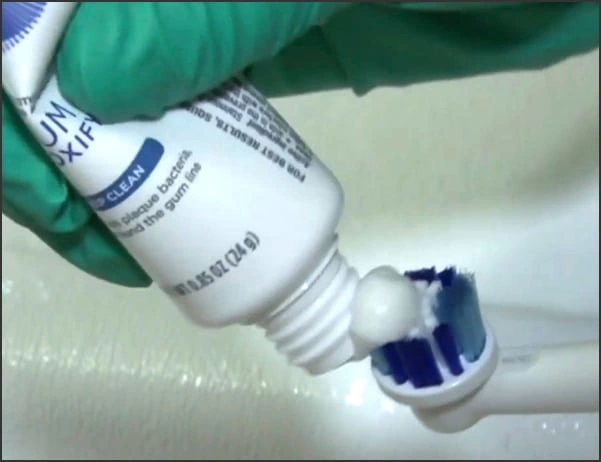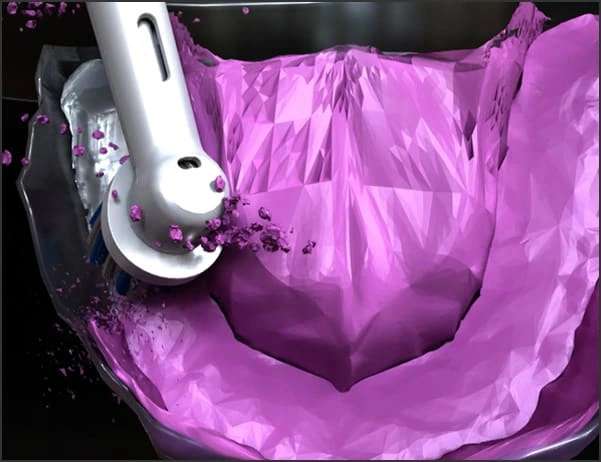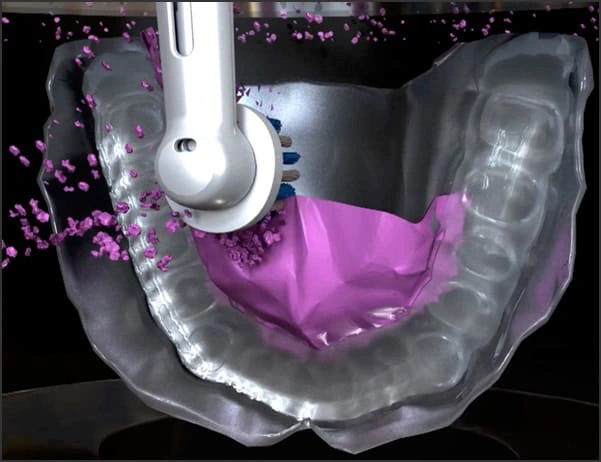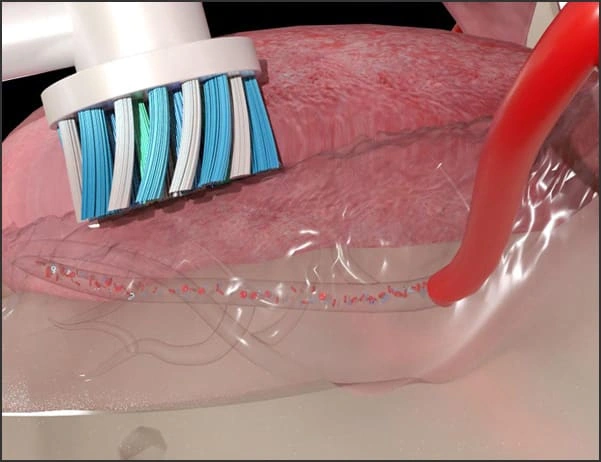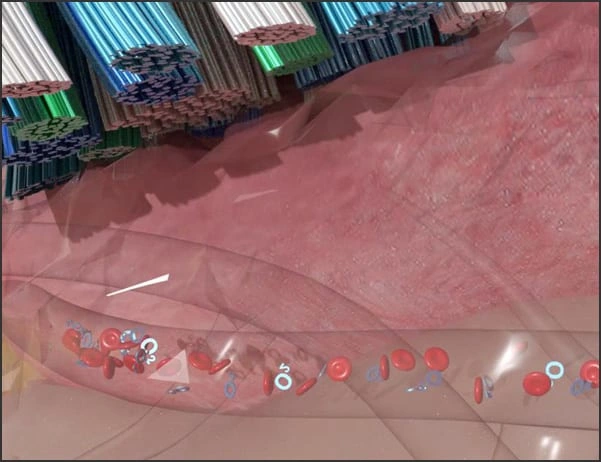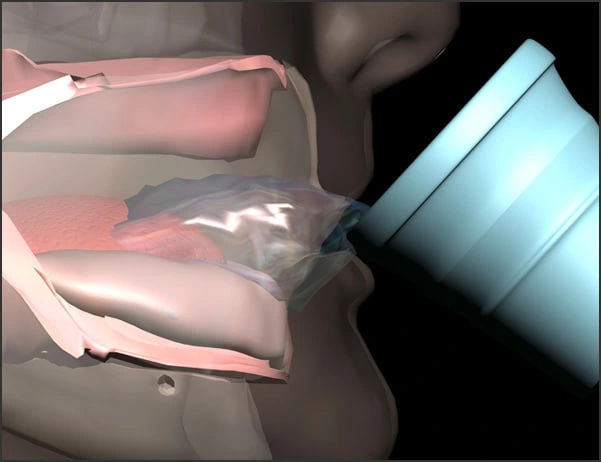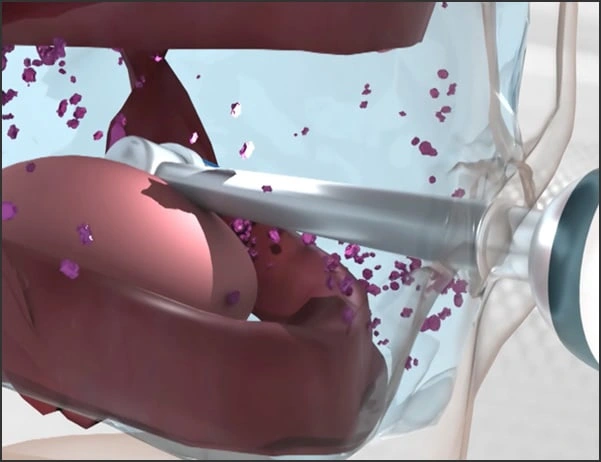Prosthesis Retention and Effective Use of Denture Adhesive in Complete Denture Therapy
Course Number: 360
Technique for Denture Adhesive Removal
1. Use of an electric toothbrush can enhance thorough cleaning of both denture surfaces and denture bearing oral tissues (Figure 7). Reasonably priced electric brushes are now widely available to consumers. A small amount of toothpaste on the electric toothbrush will serve to freshen the patient’s breath and improved taste (Figure 8).
Figure 7. Electric powered toothbrush.
Figure 8. Small amount of toothpaste dispensed onto toothbrush.
2. Remove the denture from the mouth and hold submerged in a container of warm water and simultaneously scrubbed using the electric toothbrush (Figure 9). Firm pressure should be applied to the brush in order to eliminate adhesive from the denture surface. Particles or clumps of adhesive material will be seen rising to the surface of the water. This submerged water decouples the cellulose by over saturation, thereby decoupling the adhesive (Figure 10). This procedure is continued until the entire denture surface is free of residual adhesive.
Figure 9. Final scrubbing with denture submerged in warm water.
Figure 10. Particulate debris removed from denture is seen rising to surface of warm water.
3. To clean and stimulate the oral tissues, the electric toothbrush may again be used. A small amount of toothpaste is applied to the brush. All denture bearing soft tissues and tissues that contact the cameo surfaces of the dentures, including the tongue, are gently massaged (Figure 11). At first, this may cause a tingling sensation for the patient. This sensation will disappear with repeated use.
Figure 11. Initial massaging of oral tissues with an electric toothbrush with water in mouth while pursing lips together to allow improved hydration and accelerate red blood cells to release O2 into the tissues.
Figure 11. Initial massaging of oral tissues with an electric toothbrush with water in mouth while pursing lips together to allow improved hydration and accelerate red blood cells to release O2 into the tissues.
4. Following thorough massaging of the oral soft tissues, warm water is introduced into the patient’s mouth (Figure 12). Holding this water in the mouth, the electric toothbrush is again used to massage all oral soft tissues (Figure 13). The patient is then instructed to expectorate the water and residual debris into a sink, leaving the oral tissue free of adhesive.
Figure 12. Introduction of warm water into patient’s mouth.
Figure 13. With warm water in mouth, patient continues oral tissue massage until adhesive elimination is complete.



